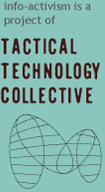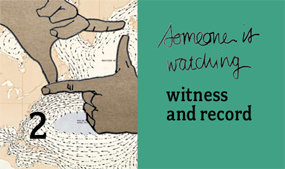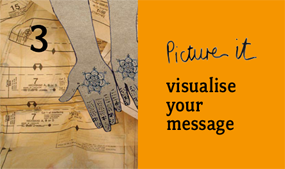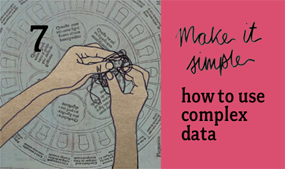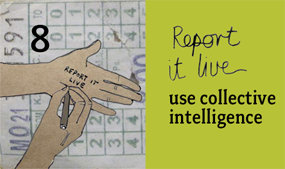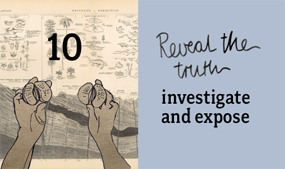10 Tactics was included in the annual Human Rights Fair in Mexico City which took place over the first weekend of December in the city's main plaza, the Zócalo. Under the slogan “It's your city … live it. It's your right”, over 80 organisations executed a wide variety of activities involving human rights awareness, education, information rallies and entertainment.
Story by Juan Casanueva
In partnership with the United Nations' Office of the High Commissioner for Human Rights in Mexico and the DOCS-DF Film Festival, the NGO REDDES screened 10 Tactics in the 'Films For Rights' screening tent and met key human rights advocates to promote info-activism as part of human rights promotion and defense in the country. The screening was part of a day long film session that also included human rights short films and documentaries, such as “72 Migrants” and “La Guerra por Otros Medios” (War Through Other Means). The 10 Tactics screening gathered a very diverse audience of activists, film promoters, human rights advocates, NGO personnel, journalists and citizens.
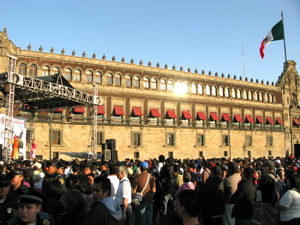
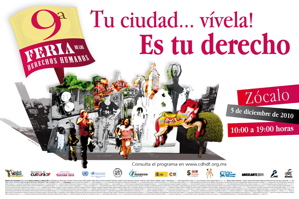
Mexico City's annual Human Rights Fair was a space in which conversations on the use of technology as a means to strengthen human rights actions took place. Some NGOs and advocates participating in the fair were relatively new to digital technology tools and had very little experience applying tactics to their daily advocate activities. Advocates saw 10 Tactics as a very important item for their introduction to info-activism. More experienced activists and NGOs with current technology-based activities were eager to know more about international cases of info-activism in order to redefine and strengthen their own tactics and strategies.
After the screening, lively debates over successful info-activism tactics were shared among advocates. The leaders of a community radio in marginalised areas of Mexico City were interested in using other digital media besides radio and podcasting to strengthen their message and community engagement.
Meanwhile, students from the Human Rights BA at the Universidad del Claustro de Sor Juana interviewed people and advocates as part of a documentary on Human Rights. Also, Derechos Humanos ONG Continental shared their experience using social media as a human rights communication platform. They encouraged other NGOs and activists to use video tools as a means of bringing people around a cause and delivering human rights awareness messages.
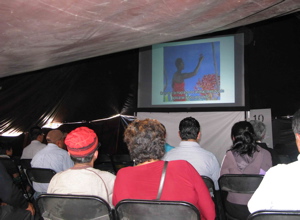

There was a lot of interest from journalists to know more about 10 Tactics and what new technology means for their work and the relationship between citizen and professional reporting. Journalist safety rights advocate Elizabeth Palacios reflected on how professional journalists should participate more actively in social media spheres in order to gain insight on topics and first hand people`s reporting. She noted how digital media had sprung into the journalist profession making some information (restricted, censored or first-hand people's testimony) available for journalistic analysis. Nonetheless, she warned other activists and fellow journalists to be cautious and always remember basic information verification habits (story validation, source reputation and peer review) before even re-tweeting a message.
Elizabeth also highlighted the relevance of the current Mexican journalist activism that has been fighting collectively though different media (formal editorial notes in newspapers, TV, Twitter and Facebook) to enhance awareness of threats and human rights abuses towards Mexican journalists and demanding more protection measures.
Links: Mexico City's Human Rights Commission, Docsdf
United Nations' Office of the High Commissioner for Human Rights in Mexico short-film contest “Un Minuto por los Derechos Humanos”
Derechos Humanos ONG Continental's YouTube channel
Follow the Mexican journalist safety movement on Twitter and Facebook
PHOTOS: The Zocalo square, poster for the annual Human Rights Fair, 10 Tactics screened in the screening tent, the view from behind the screen.

